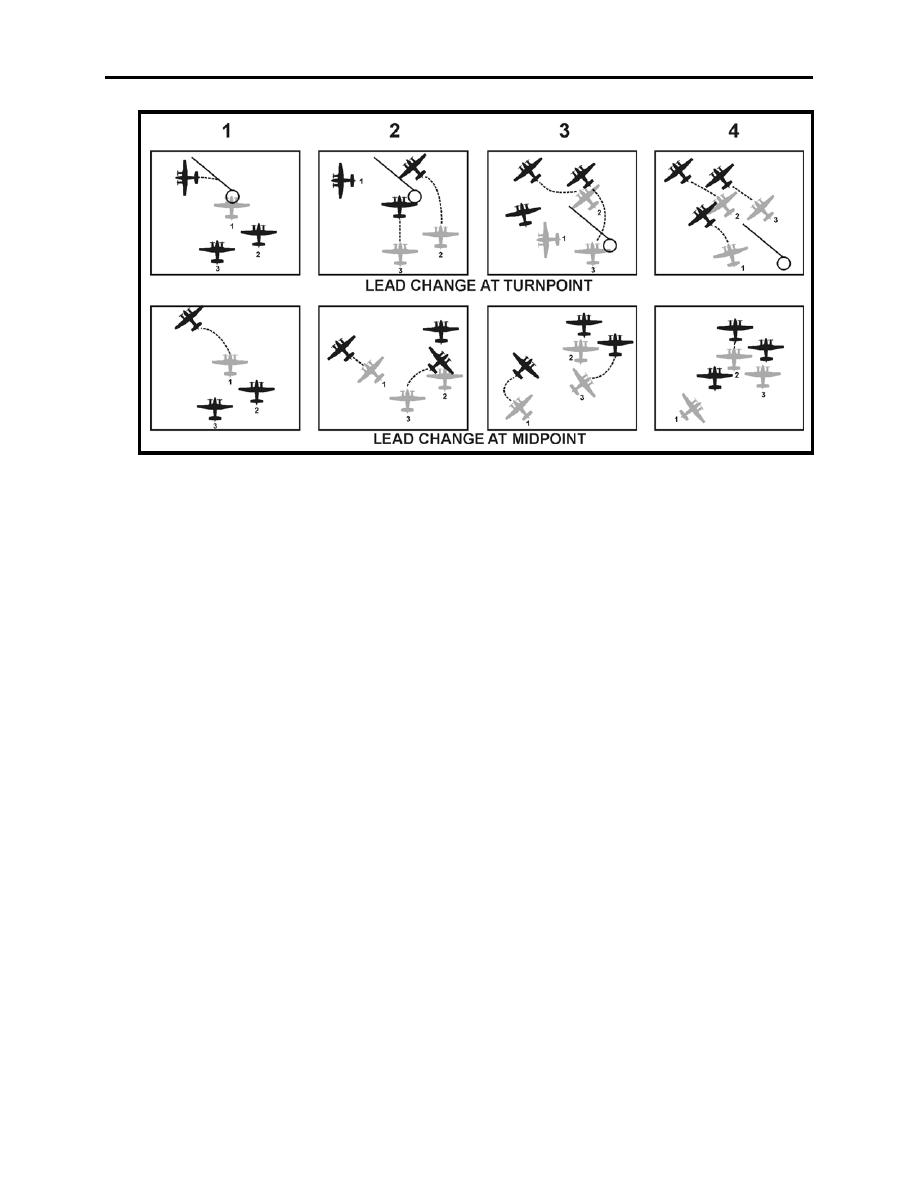 |
|||
|
Page Title:
Figure 2-6 Formation Lead Changes |
|
||
| ||||||||||
|
|  LOW-LEVEL AND TACTICAL FORMATION
CHAPTER TWO
Figure 2-6 Formation Lead Changes
213. ENROUTE
LEAD is primarily responsible for navigation and terrain avoidance. LEAD maintains altitude
by reference to the radar altimeter and terrain. WING uses a combination of the above and
reference to LEAD. Five miles prior to each turnpoint, the copilot will brief the course and
airspeed (and altitude if different then 500 AGL) for the following leg. Also include any
additional information concerning the formation (i.e., upcoming lead change or transition to fluid
trail).
NOTE
For wingman considerations, LEAD should use no more than 1200
ft-lbs (T-44)/2000 ft-lbs (TC-12) for accelerations and climbs.
LEAD should use no less than 400 ft-lbs for decelerations and
descents.
214. SLOWDOWN
Slowdown occurs at a prebriefed, identifiable, geographic point. Slowdown should be
accomplished early enough to allow all aircraft to be stabilized at drop altitude and airspeed
1 minute prior to green light.
1.
At the slowdown point, LEAD transmits "Stingray/ Montana xxx flight slowdown, now"
over formation interplane.
TACTICAL FORMATION
2-15
|
|
Privacy Statement - Press Release - Copyright Information. - Contact Us |